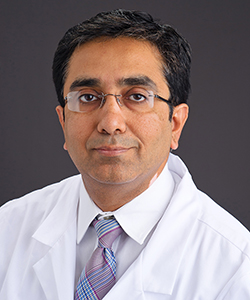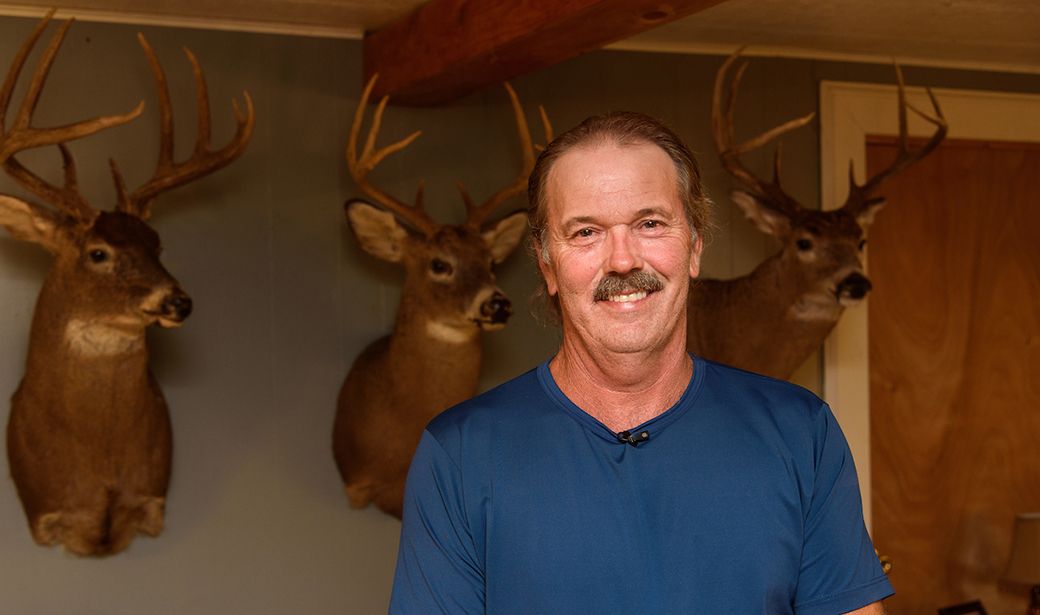Five mounted deer heads gaze out from the living room walls of Gene Beal’s home near Auxvasse, Missouri. His wife, Julie, has requested a ceasefire on his contributions to the home’s interior decoration, but he’s making no firm commitments in that regard. Beal does concede that it would take a real trophy buck to earn another spot on his crowded walls of fame.

He opens a closet to reveal row after row of canned tomatoes, pickles, peppers and salsas of varying strengths. His expertly fertilized and meticulously weeded gardens barely needed any watering throughout an arid summer. His friends say he has a green thumb, and that 15-pound cantaloupe he hauled from the melon patch out back suggests they are correct.
If he occasionally must be indoors, at least he can be surrounded by the fruits of his labors of love.
“I’m just an outdoorsman,” Beal said with a shrug. “I love the outdoors. I could be out there all day long.”
Beal, 53, was so healthy he had barely interacted with a doctor in his first five decades, but one night three years ago he awoke with his heart racing.
“It’s just like if you ran a race, you feel your heart beating through your chest,” Beal said. “That’s what mine was doing, but I wasn’t doing anything to set it off.”
Beal was suffering from atrial fibrillation, also known as AFib, a rapid and irregular heart beat originating in the upper chambers of the heart. The condition causes blood to pool in the heart, which can lead to blood clots and devastating strokes.
“He was extremely distressed by these episodes of atrial fibrillation during which he would get palpitations, get short of breath, get extremely weak,” said MU Health Care’s Sandeep Gautam, MD, a cardiologist who specializes in the heart’s electrical system. “He thought this was related to dehydration, so he worked on that but kept on getting these spells.”
Gautam said patients diagnosed with AFib receive an electrocardiogram and wear an outpatient heart monitor for one to 30 days. Sometimes a shock to the heart — called a cardioversion — in conjunction with anti-arrhythmic medication is enough to return the heart to its normal rhythm. Most patients are also prescribed anti-coagulant medication to guard against strokes.
In Beal’s case, the anti-arrhythmic medicine did the job for a few months but then quit working. He tried a different medicine, and another. The outcome was always the same — temporary success.
“Everywhere I went, I had to make sure I had my medicine,” Beal said. “I wondered each day whether it was going to work today or not work today. It bothers you.”
Gautam suggested early on that Beal was a good candidate for an ablation. In this procedure, a catheter with a radiofrequency tip is inserted into the femoral vein in the groin and guided to the heart. The tip of the catheter is gently placed against the parts of the heart that are sending abnormal electrical signals and blocks those signals, allowing the heart to return to a normal rhythm.
MU Health Care’s electrophysiologists now can use 3-D heart mapping, allowing the catheter to be guided to the heart using little or no fluoroscopy, which limits or eliminates a patient’s exposure to radiation. Patients usually remain in the hospital overnight and are released the next day.
Beal, who had never undergone a surgery of any kind, initially resisted having an ablation. But after a year of trying to treat his AFib with medication, he had the procedure done in September 2017.
The day after Gautam performed the ablation, Beal went home from the hospital. He took the week off from his physically taxing job trimming trees away from power lines. By the middle of the week, though, he felt so good and was so antsy to get outside, he helped a friend roof a house. Eight days after surgery, the devoted hunter was back in his happy place — a deer stand.
Gautam said 60 to 70 percent of patients who have ablations are able to get off their AFib medications. That has been the case with Beal, who now wishes he had the procedure done sooner.
“Since I got the ablation, I’ve never felt the flutter, never felt the AFib,” Beal said. “It’s been wonderful.”



